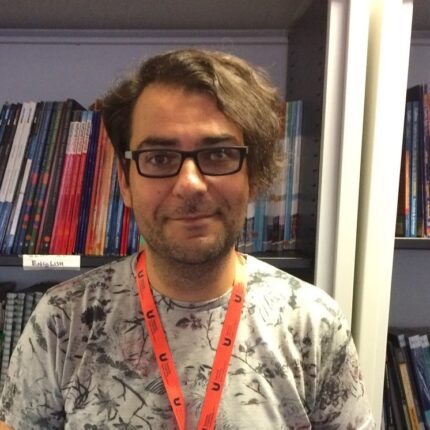Universities highlight language support programs as proof of their commitment to inclusivity, yet these offerings are often expensive, overly prescriptive, optional, and poorly integrated.
Pre-sessional provision comes with hefty price tags, making language support a privilege rather than a right. Students who cannot afford them are either excluded from higher education or forced to struggle in degree programs where linguistic preparedness is assumed rather than supported.
I once supported a postgraduate student from East Asia who was excelling in her subject knowledge but consistently received vague feedback like “lack of critical engagement” on her assignments.
She was deeply confused – she had addressed all the questions and provided detailed analysis. In our one-to-one tutorials, it became clear that the issue was not her understanding of the topic, but that she hadn’t been explicitly taught what criticality looks like linguistically in UK academic culture.
No one had ever shown her how to signal argument structure or contrast ideas subtly in writing. Despite her intelligence and effort, she was left to decode these expectations on her own, and it affected both her grades and her confidence.
What does it say about our commitment to inclusion when students are expected to navigate invisible academic norms alone?
Supplementary or fundamental?
To make matters worse, in-sessional provision, where available, is often treated as an afterthought rather than an integrated resource, leaving students struggling to meet academic demands or seeking help on their own time while managing intensive timetables, packed with lectures, assignments, and deadlines.
This approach positions language support as a supplementary service rather than a fundamental component of academic success, reinforcing the notion that multilingual students must “catch up” instead of valuing their linguistic abilities as assets.
In one programme I supported, attendance at in-sessional sessions was minimal at first – not because students didn’t need them, but because they didn’t know they existed. There was limited to zero visibility of these educational initiatives, and many students were unaware of how language development related to academic success.
It wasn’t until we launched a more systematic approach to promotion – class presentations, VLE announcements, email campaigns, ads on campus screens, fliers, and peer recommendations – that attendance noticeably increased. Word of mouth became our most effective tool, which was both encouraging and telling. If in-sessional provision only gains traction through backdoor advocacy, how inclusive is that, really?
Shortcomings, however, appear to extend far beyond language provision. Pedagogical practices in many institutions remain stubbornly monolingual, built on the assumption that a single teaching model can work for all students, regardless of their linguistic and cultural backgrounds.
This one-size-fits-all approach, which assumes uniformity in learning needs and styles, disregards the diverse ways students engage with knowledge. Standardised teaching methods leave little room for flexibility, forcing students to conform rather than allowing for adaptability and meaningful engagement.
Conformity or critical thinking?
Nowhere is this more evident than in assessment. Universities continue to rely on rigid, English-centric evaluation methods including essays, presentations, and exams graded against standardised linguistic norms, disadvantaging multilingual students rather than valuing their perspectives.
If inclusivity truly mattered, assessments would prioritise critical thinking, originality, and academic engagement over strict linguistic conformity. Instead, institutions uphold traditional models that often disadvantage students from diverse linguistic backgrounds. For example, I once co-marked a brilliant essay that presented a nuanced critique of policy frameworks. It was downgraded – not for weak argumentation – but for not aligning with “expected” academic language norms.
Despite offering original insights and drawing on a range of interdisciplinary sources, the essay was penalised for its occasional non-standard syntax and limited use of discipline-specific vocabulary. Rather than recognising the intellectual rigour of the argument, the feedback focused almost exclusively on surface-level language issues. How does that reflect the critical thinking we claim to value?
While universities struggle to create truly inclusive academic environments, the burden of making the system work falls on EAP practitioners and frontline educators, who are expected to foster inclusivity despite being overstretched, underpaid, and under-resourced. Many receive either little or no formal training in multilingual pedagogies, yet they are tasked with ensuring student success within a rigid system that resists adaptation. From personal experience, I can say that navigating this contradiction is emotionally and professionally draining.
I’ve sat in staff meetings where the pressing need to be inclusive was discussed, only to return to classrooms with no budget for updated materials, no time allocation to work on such updates, and no training on how to implement the very principles being endorsed.
At times, I’ve been expected to “embed inclusive practice” without any clear guidance on what that actually means in context, leaving me to interpret and apply vague directives on my own. This disconnect creates a sense of frustration and helplessness – wanting to support students meaningfully but lacking the structural backing to do so effectively.
The disconnect is glaring – universities promote inclusivity in their policies while shifting the responsibility of implementation onto educators who lack the necessary resources, training, and structural support to make meaningful change. Institutions seek improvement without providing the means to achieve it.
On top of this, accreditation bodies, which should act as enforcers of inclusivity, are complicit in this shortcoming. While they promote the idea of inclusivity as a core value, their competency frameworks remain vague and unenforceable, allowing institutions to check superficial boxes rather than implement meaningful change – without ever being truly held accountable.
Instead of pushing institutions toward equitable assessment strategies, embedded language support, and multilingual pedagogies, accreditation bodies enable them to maintain the status quo while advertising themselves as champions of inclusion.
Integrating EAP
If universities and accrediting bodies are serious about inclusivity, they must dismantle their one-size-fits-all approach and invest in flexible, student-centered models. EAP should not be an expensive privilege but an embedded, fully integrated component of degree programs.
Language support must be available without financial barriers and tailored to students’ actual needs rather than forced into a standardised mold that ignores their diverse experiences. Institutions must move beyond the outdated view that multilingualism is a problem to be fixed and instead embrace it as an academic strength that enhances learning for all students.
For example, multilingual writing workshops, co-delivered by faculty and language specialists, have shown success in small-scale pilots. Why not scale them? Similarly, peer mentoring across language backgrounds fosters both inclusion and academic development. These are not costly solutions, but they do require intention and planning.
Assessment practices must undergo reform. Universities should move beyond evaluating students solely through rigid linguistic norms and instead adopt translingual, context-sensitive assessments that measure intellectual engagement, not just English proficiency.
Traditional assessment models often privilege students who are already proficient in standardised academic English, disregarding the depth of thought, creativity, and critical analysis that can be expressed through diverse linguistic resources.
If higher education truly values critical thinking and originality, its assessment models must reflect that rather than simply rewarding those who conform to narrow linguistic standards. Practical steps might include offering multilingual glossaries during assessments, encouraging multimodal submissions (like presentations or podcasts), and designing rubrics that focus on analytical rigour rather than grammatical precision. These shifts do not dilute standards—they redefine them to reflect actual learning.
Beyond reforming teaching and assessment, universities must stop offloading the responsibility for inclusivity onto individual educators. Institutions must invest in faculty development, providing structured training in multilingual pedagogies and equitable assessment models.
Educators should not be expected to figure out inclusivity on their own – institutions must offer policies with clear, actionable steps that guide them in creating learning environments that serve all students, rather than relying on vague inclusivity statements that sound aspirational but achieve little. This might include mandatory training modules for new staff, collaborative spaces where educators can share inclusive teaching strategies, and formal incentives for inclusive curriculum design.
At the same time, accreditation bodies must reimagine competency frameworks and accreditation schemes to ensure that inclusivity is not just encouraged but required. These frameworks should move beyond broad, generic statements and introduce enforceable, transparent standards that hold institutions accountable.
Accreditation should no longer be granted based on superficial inclusivity measures but tied to real, measurable efforts in integrating multilingual pedagogies, equitable assessment strategies, and accessible language support. Regulatory bodies must stop allowing universities to simply claim inclusivity and start demanding that they prove it.
The future of inclusive higher education hinges on institutions and accrediting bodies being willing to rethink not just their policies but their entire approach to teaching, assessment, and faculty support. Without structural change, inclusivity will remain more of a promise than a practice – a feel-good slogan that limits accountability while leaving students to navigate an inequitable system.
And for those of us who teach, support, and listen to these students every day, that’s not just a policy failure – it’s a deeply personal one. So, the question remains: are universities truly committed to inclusivity, or are they merely preserving the status quo under the illusion of progress? If it’s the latter, then higher education is not meeting the needs of the very students it claims to support. It’s not enough to say the right things – it’s time to do the right things.













This is also subject-dependent. The details in the above article seem relevant to humanities and social sciences, not so much to science and engineering.
The problem is not the lack of remedial provision, it is that cash-hungry universities accept overseas students who do not meet minimal standards of English proficiency.